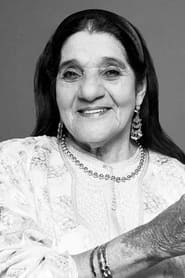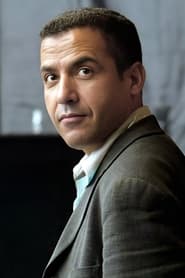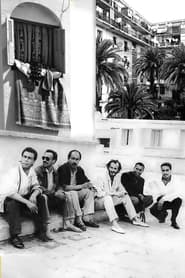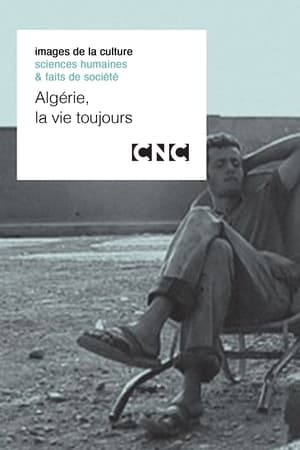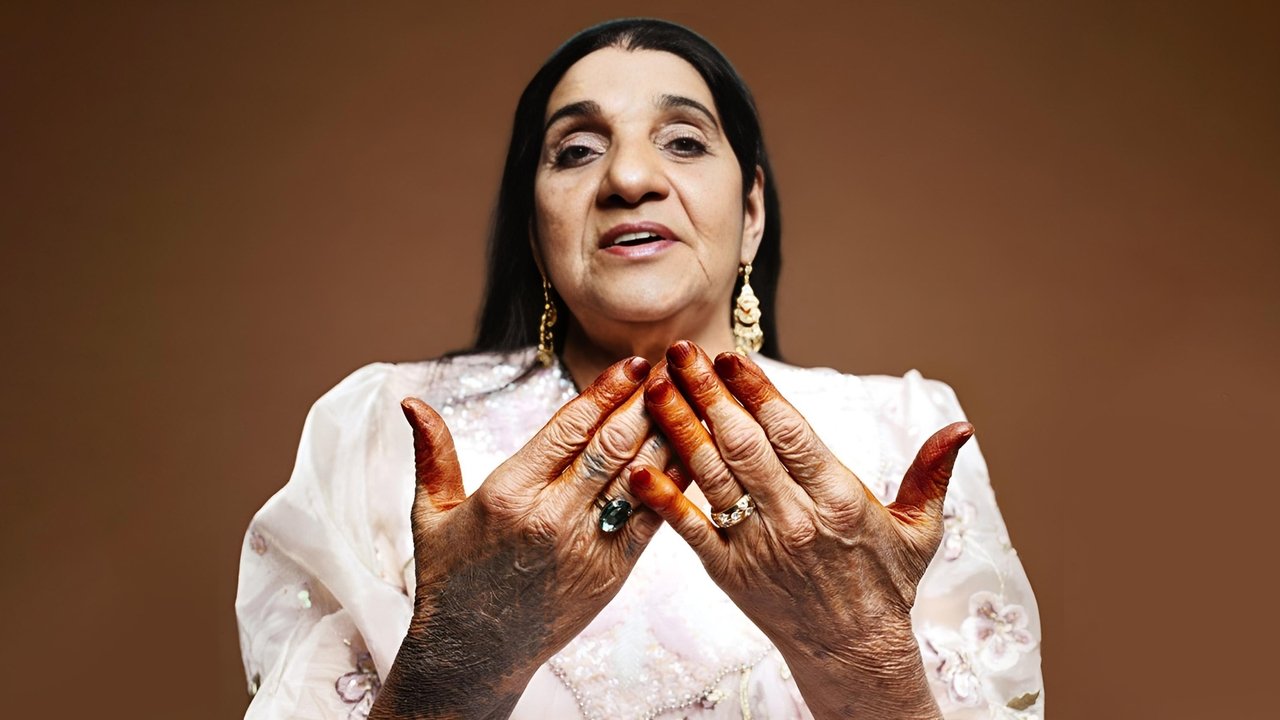
Raï Story: From Cheikha Rimitti to Cheba Djenet(2004)
From Cheikha Rimitti to Cheba Djenet
Raï Story is a musical journey in search of the Raï legend, Cheikha Remitti, in Oran, Algeria, where the Raï musical tradition began. In 1923, the first Raï singers performed behind screens during ceremonies to protect their identity. It was only when the music of singer Cheikha Remitti began to gain popularity among the general public that Raï music was made public, in the 1940s. Cheikha Remitti, who lives between Paris and Oran, is nowhere to be found, the filmmakers then decide to meet producers, musicians, singers like Cheba Dalila or Cheba Djenet, for whom Remitti created a wake. The opportunity, through these unique stories, illustrated with archive images, to retrace the important place of women in this musical tradition and the transformation of Raï music from the 1960s to 2000.


Movie: Raï Story: From Cheikha Rimitti to Cheba Djenet
Top 10 Billed Cast
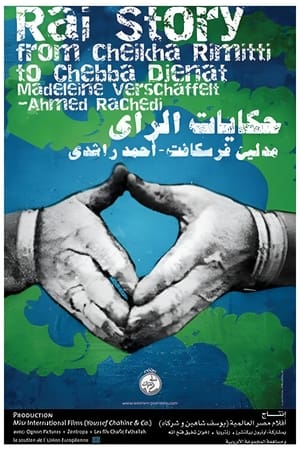
حكايات الراي
HomePage
Overview
Raï Story is a musical journey in search of the Raï legend, Cheikha Remitti, in Oran, Algeria, where the Raï musical tradition began. In 1923, the first Raï singers performed behind screens during ceremonies to protect their identity. It was only when the music of singer Cheikha Remitti began to gain popularity among the general public that Raï music was made public, in the 1940s. Cheikha Remitti, who lives between Paris and Oran, is nowhere to be found, the filmmakers then decide to meet producers, musicians, singers like Cheba Dalila or Cheba Djenet, for whom Remitti created a wake. The opportunity, through these unique stories, illustrated with archive images, to retrace the important place of women in this musical tradition and the transformation of Raï music from the 1960s to 2000.
Release Date
2004-12-01
Average
10
Rating:
5.0 startsTagline
From Cheikha Rimitti to Cheba Djenet
Genres
Languages:
العربيةFrançaisKeywords
Recommendations Movies
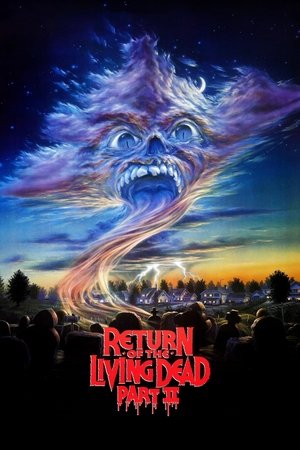 6.3
6.3Return of the Living Dead Part II(en)
A group of kids discover one of the drums containing a rotting corpse and release the 2-4-5 Trioxin gas into the air, causing the dead to once again rise from the grave and seek out brains.
 6.1
6.1Return to Nuke 'Em High Volume 1(en)
Return to the Class of Nuke 'Em High follows a young couple that are up against the school glee club. Unfortunately, the glee club has mutated into a gang called The Cretins. When the other students begin to undergo mutations, our couple must solve the mystery and save Tromaville High School
 5.7
5.7Hatchet III(en)
A search and recovery team heads into Victor Crowley’s haunted swamp to pick up the pieces, and Marybeth learns the secret to ending the voodoo curse that has left Victor Crowley terrorizing Honey Island Swamp for decades.
 5.9
5.9Universal Soldier: The Return(en)
Luc Deveraux, the heroic former Universal Soldier, is about to be thrown into action once again. When SETH, the supercomputer-controlled ultra-warrior, decides to take revenge and destroy its creators, only Luc can stop it. All hell breaks loose as Luc battles SETH and a deadly team of perfect soldiers in a struggle that pits man against machine and good against evil.
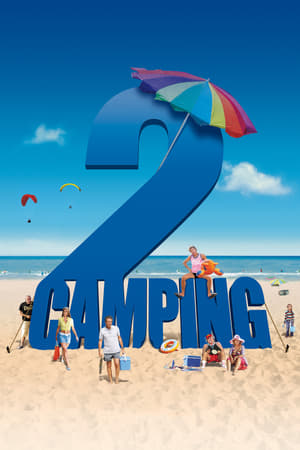 4.8
4.8Camping 2(fr)
Jean-Pierre Savelli is a forty-something employee of an insurance company in Clermont-Ferrand who finds himself facing a mid-life crisis. When his fiancée Valérie decides to put their relationship on hold, he changes his holiday plans and heads for the Flots Bleus camping site near Arcachon. Jean-Pierre had been hoping for peace and calm. Instead he meets Patrick Chirac and his entourage of inveterate holidaymakers...
 6.2
6.2Avalon High(en)
Elaine "Ellie" Harrison has just moved from Minnesota to Annapolis, Maryland while her parents take a year-long sabbatical to continue their medieval studies in nearby Washington D.C. Her new high school, Avalon High, seems like a typical high school with the stereotypical students: Lance the jock, Jennifer the cheerleader, Marco, the bad boy/desperado, and Will, the senior class president, quarterback, and all around good guy. But not everyone at Avalon High is who they appear to be, not even Ellie herself. Eventually, it becomes apparent that Avalon High is a situation where the ancient Arthurian legend is repeating itself.
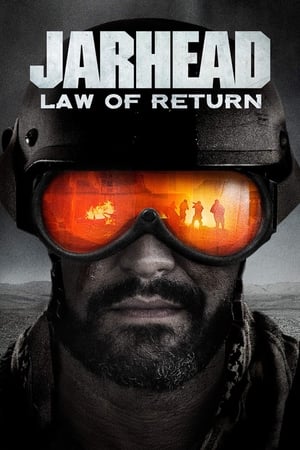 6.5
6.5Jarhead: Law of Return(en)
Major Ronan Jackson, an accomplished fighter pilot for the Israel Defense Forces and son of a U.S. Senator, is shot down while flying through Syrian airspace. After miraculously surviving the crash, Jackson is taken captive by a group of Hezbollah militiamen. A squad of elite soldiers, led by Gunnery Sergeant Dave Torres, risk their own lives in the hopes of saving an ally they've never met.
 6.5
6.5Cocoon: The Return(en)
The reinvigorated elderly group that left Earth comes back to visit their relatives. Will they all decide to go back to the planet where no one grows old, or will they be tempted to remain on Earth?
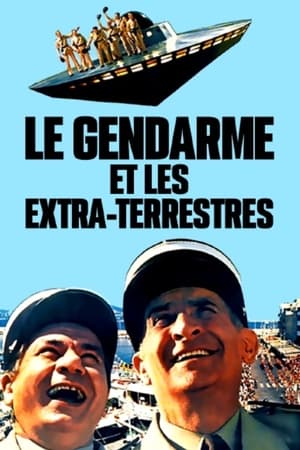 6.0
6.0The Gendarme and the Creatures from Outer Space(fr)
The bungling inspector Cruchot finds himself trying to save the residents of St. Tropez from some oil-drinking humanoid aliens. The only way to tell the aliens from the real people, besides their constant thirst for oil-products, is that they sound like empty garbage cans when you touch them. Chaos is ahead.
 7.0
7.0SlugTerra: Return of the Elementals(en)
A new member has joined Eli and the Shane Gang! Junjie, once the protector of the Eastern Caverns, is a master of the slugslinging art of Slug Fu! But even with the power of five slingers, the Shane Gang find themselves in over their heads as they race across The 99 Caverns in search of the Legendary Elemental Slugs. The five Elementals are ancient slugs of great power, and the forbearers of all slugs found in SlugTerra today. In the wrong hands, they could bring Slugterra to the brink of destruction. So when an evil alliance starts hunting down the Elementals, Eli and his friends — old and new — take off in pursuit of the greatest threat their world has ever faced!
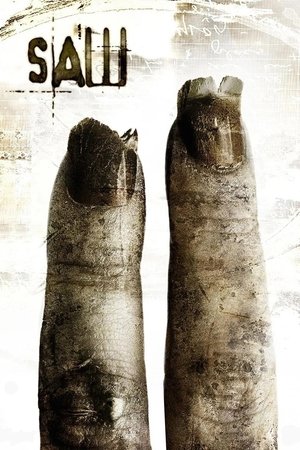 6.6
6.6Saw II(en)
The chilling and relentless Jigsaw killer returns to terrorize the city once again. When a gruesome murder victim emerges with unmistakable traces of Jigsaw's sinister methods, Detective Eric Matthews is thrust into a high-stakes investigation. To his surprise, apprehending Jigsaw seems almost too easy, but what he doesn't realize is that being caught is merely another piece of Jigsaw's intricate puzzle.
 7.6
7.6Saint Seiya: The Heated Battle of the Gods(ja)
In Siberia, Hyōga saves a man that is being attacked. Injured, the man manages only to say something about Asgard. Some days later, Saori, Seiya, Shiryū and Shun are wondering about Hyōga and decide to go to Asgard to investigate. At Valhalla, the Lord of Asgard, Dolbar, says he has not heard of any Hyōga and neither has his right hand, Loki. However, at all times Seiya and the others can feel an evil cosmo emanating from Loki and the other Odin Saints called God Warriors. Shiryū, in particular, notices a familiar cosmo coming from Midgard, a mysterious, masked God Warrior. Dolbar makes it clear that he is trying to take control of both Asgard and the Sanctuary, imprisoning Athena in a strange dimension within the giant statue of Odin. Midgard reveals himself as Hyōga and tries to kill Shiryū to prove himself to Dolbar. Thus, it is the task of the Bronze Saints to defeat Dolbar, Loki and the rest of the God Warriors, to save Athena and Hyōga.
 6.5
6.5Return to Never Land(en)
In 1940, the world is besieged by World War II. Wendy, all grown up, has two children; including Jane, who does not believe Wendy's stories about Peter Pan.
 6.1
6.1xXx: Return of Xander Cage(en)
Xander Cage is left for dead after an incident, though he secretly returns to action for a new, tough assignment with his handler Augustus Gibbons.
 5.3
5.3The Adventures of André and Wally B.(en)
There's nothing like a restful nap in a pleasant wooded valley. But when André awakens and is greeted by a pesky yellow-and-black striped insect with a nasty stinger, he ends up taking a quick (and painful) hike.
 5.7
5.71920: Evil Returns(hi)
This story revolves around a famous poet who meets a woman who is in trouble. In order to treat her, he takes her to Shimla in a big hospital, but soon that woman gets possessed by devil and goes out of control. Now the question remains that what is the relation that poet shares with her which compelled him to go to any extent to save her, why she was possessed by devil and who is the devil.
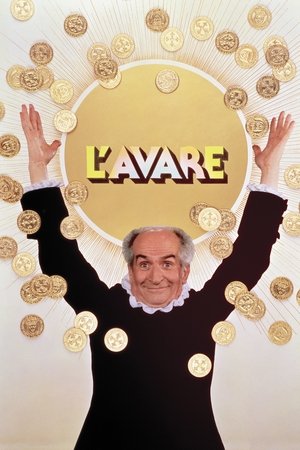 6.3
6.3The Miser(fr)
Based on Molière's play. The children of Harpagon, Cléante and his sister Elise, are each in love but they still haven't spoken to their father yet. Harpagon is a miser who wants to choose the right man and the right woman for his children. When Cléante, at last, tries to speak to Harpagon, the old man informs the family that he wants to marry Marianne, the young girl loved by Cléante. Unaware of his son's sorrow, Harpagon doesn't understand why Cléante has become so angry with him.
 6.4
6.4Dragon Ball Z: The Return of Cooler(ja)
Cooler has resurrected himself as a robot and is enslaving the people of New Namek. Goku and the gang must help.
 6.7
6.7The Little Mermaid: Ariel's Beginning(en)
Follow Ariel's adventures before she gave up her fins for true love. When Ariel wasn't singing with her sisters, she spent time with her mother, Queen Athena. Ariel is devastated when Athena is killed by pirates, and after King Triton outlaws all singing. Along with pals Flounder and Sebastian, Ariel sets off in hopes of changing her father's decision to ban music from the kingdom.
Similar Movies
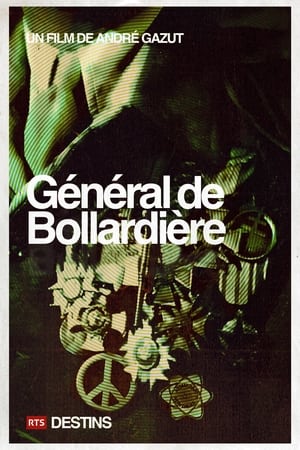 10.0
10.0Destins: Général De Bollardière(fr)
The exceptional portrait of a pacifist general, the only senior officer to have spoken out against torture. This precious testimony still remains censored in France, since no national channel has to date decided to program this documentary. Son and brother of a soldier, General Pâris de Bollardière was destined for a career in arms. He was, for many years, one of the most brilliant representatives of this adventurer career in France, from Narvik to the Algerian War. After fighting in the French maquis, he reached Indochina, where he suddenly found himself in the aggressor's camps. His beliefs are strongly shaken. But it is in Algeria, where the French army practices torture and summary executions, that he takes the big turn. He expresses his contempt to Massu, and is relieved of his command. Until his death in 1986, Jacques de Bollardière fought for world peace, from the Larzac plateaus to the Mururoa atolls.
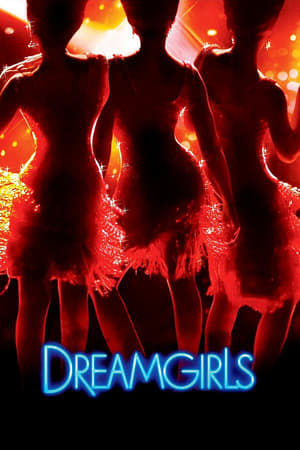 6.7
6.7Dreamgirls(en)
A trio of female soul singers cross over to the pop charts in the early 1960s, facing their own personal struggles along the way.
 7.5
7.5Hitler's Disastrous Desert War(en)
When the British army looks set to defeat Mussolini’s Italian forces, Hitler sends reinforcements; the Afrika Korps led by General Rommel. The Desert Fox is on winning form until Montgomery, the British commander, sets up a plan to crush his opponent. After the American landing in North Africa, the Axis armies have no choice but to surrender and put an end to the Desert War.
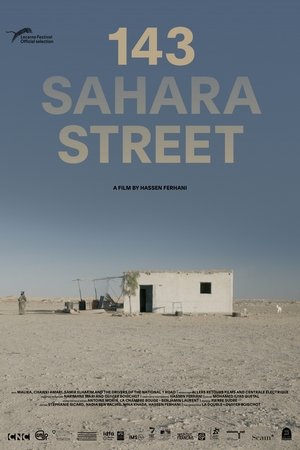 7.0
7.0143 Sahara Street(fr)
Alone in a small white house on the edge of national road 1, the Trans-Saharan road, which connects Algiers to Tamanrasset crossing the immensity of the desert, Malika, 74, one day opened her door to the director Hassen Ferhani, who came there to scout with his friend Chawki Amari, journalist at El Watan and author of the story Nationale 1 which relates his journey on this north-south axis of more than 2000 km. The Malika of Amari's novel, which Ferhani admits to having first perceived as a "literary fantasy", suddenly takes on an unsuspected human depth in this environment naturally hostile to man. She lends herself to the film project as she welcomes her clients, with an economy of gestures and words, an impression reinforced by the mystery that surrounds her and the rare elements of her biography which suggest that she is not from the region, that she left the fertile north of Algeria to settle in the desert where she lives with a dog and a cat.
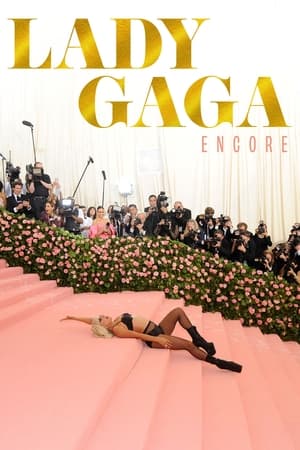 7.3
7.3Lady Gaga - Encore(en)
Gaga has travelled through time with her ever changing sound, reinventing herself for every album, award ceremony and red carpet. With a strong fan base behind her, she continues to reign as one of the biggest pop stars of the industry.
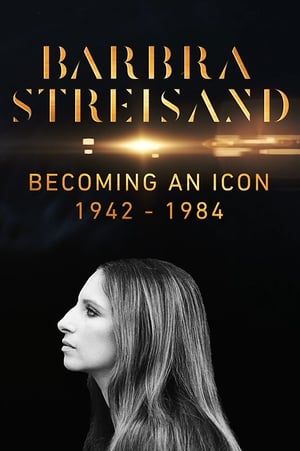 6.9
6.9Barbra Streisand: Becoming an Icon 1942–1984(fr)
Barbra Streisand grew up in working class Brooklyn, dreaming of escape from her tough childhood. A stellar student, she resisted the pressure to go to college as her sights were firmly set on Broadway. She was determined to become an actress and landed her first role aged 16, but it was two years later, when she started to sing, that her career took off. Subverting stereotypes and breaking glass ceilings, this programme looks at her rise to stardom and the remarkable achievements of her early career.
 10.0
10.0Bouzareah(fr)
Arriving aboard the liner “Ville d’Alger”, young French citizens go to Bouzareah to follow a one-year professional training course at the École Normale. After acquiring the basics of the Arabic language and culture, the future teachers are trained to teach the population the basics of modern agriculture, manual work and hygiene. A study trip concludes the training. The teachers are then sent to the regions of their choice, where they will put their knowledge at the service of the inhabitants.
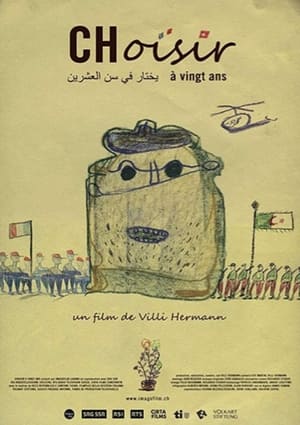 6.8
6.8CHoosing at Twenty(fr)
Between 1954-1962, one hundred to three hundred young French people refused to participate in the Algerian war. These rebels, soldiers or conscripts were non-violent or anti-colonialists. Some took refuge in Switzerland where Swiss citizens came to their aid, while in France they were condemned as traitors to the country. In 1962, a few months after Independence, Villi Hermann went to a region devastated by war near the Algerian-Moroccan border, to help rebuild a school. In 2016 he returned to Algeria and reunited with his former students. He also met French refractories, now living in France or Switzerland.
 0.0
0.0True Chronicles of the Blida Joinville Psychiatric Hospital in the Last Century, when Dr Frantz Fanon Was Head of the Fifth Ward between 1953 and 1956(ar)
1953, colonized Algeria. Fanon, a young black psychiatrist is appointed head doctor at the Blida-Joinville Hospital. He was putting his theories of ‘Institutional Psychotherapy’ into practice in opposition to the racist theories of the Algies School of Psychiatry, while a war broke out in his own wards.
 5.5
5.5The Pretenders: Chrissie Hynde or Rock Life(fr)
A journey through the artistic life of the British-American rock band The Pretenders, formed in 1978, and a portrait of its leader, the charismatic singer and songwriter Chrissie Hynde.
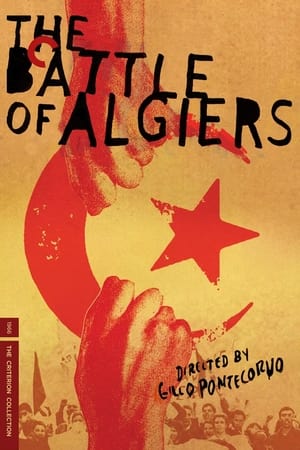 10.0
10.0Five Directors On The Battle of Algiers(en)
This 17-minute documentary is featured on the 3-Disc Criterion Collection DVD of The Battle of Algiers (1966), released in 2004. An in-depth look at the Battle of Algiers through the eyes of five established and accomplished filmmakers; Spike Lee, Steven Soderbergh, Oliver Stone, Julian Schnabel and Mira Nair. They discuss how the shots, cinematography, set design, sound and editing directly influenced their own work and how the film's sequences look incredibly realistic, despite the claim that everything in the film was staged .
 7.0
7.0Tina Turner: Private Dancer Tour(en)
The Private Dancer Tour was the fifth concert tour by singer Tina Turner. In support of her fifth studio album, Private Dancer (1984), the tour helped to establish Turner as a major solo artist of the 1980s and a dynamic solo performer, after initially starting out singing with ex-husband Ike Turner's band. The tour is often considered one of the best comebacks in music history. The 180-date, eleven-month world tour traveled across Europe, North America and Australasia. Notably, Turner played a show in Budapest, Hungary, the only show of the tour behind the Iron Curtain. The concerts received many accolades, including the "Most Creative Tour Package" and "Comeback Tour Of The Year" awards from Pollstar. The two March 1985 shows at Birmingham, England's NEC Arena were filmed and released as Tina Live: Private Dancer Tour. It featured special guests Bryan Adams and David Bowie. In 2025 a 4K upgraded blu ray of the concert came out, including bonus video clips.
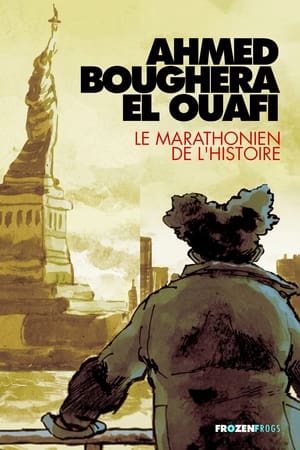 10.0
10.0El Ouafi Boughera, The marathon runner of history(cn)
On August 5, 1928, after 2 hours and 32 minutes of racing, the 71st rooster wearing the bib entered the Olympic stadium in Amsterdam. Ahmed El Ouafi Bouguéra wins the gold medal and becomes the first Olympic champion from the African continent. He achieved his feat under the tricolor flag. The start of his real marathon is underway. The history of sport extends to the history of Algeria and France. This documentary retraces the different stages of the life of this great champion, not only the history of sport but also the great story. Archival photographs and interviews mingle with the painted paintings. The series thus once again gives voice to this forgotten hero, one of the great heroes of immigration who defended France for more than a century.
 8.2
8.2Lady Gaga, a Star Is Born(fr)
Eccentric and provocative, Lady Gaga is undoubtedly the greatest pop diva. The one who is actually called Stefani Germanotta is a brilliant artist, capable of all the excesses, but also a wounded woman, marked by a terrible drama. An artist who had to fight and overcome many humiliations to reach the top. Today, Lady Gaga is an undisputed music star with 230 million records sold, and a film icon thanks to the film "A Star is Born" and her role in "House of Gucci". In less than 15 years, she has become one of the most influential women in the world. To better understand her, those who have known her since her early days reveal her secrets and tell the story behind the scenes of the films and songs that have built her legend.
 8.2
8.2Miley Cyrus - Endless Summer Vacation (Backyard Sessions)(en)
Miley Cyrus takes the stage in this must-see, Disney+ music event featuring debut performances of her highly anticipated eighth studio album, "Endless Summer Vacation." The global superstar’s cinematic, one-of-a-kind performances are threaded together with exclusive interviews where she provides insight to her new album and the person she is today.
 7.0
7.0Mireille Mathieu - Singen, nur singen(de)
Mireille Mathieu, along with Edith Piaf and Dalida, is part of France's national cultural heritage. The documentary shows the tension between the celebrated and at the same time banished, the ambassador of France in the world, who appears only rarely in her own homeland. Why is Mireille Mathieu, the unusual star, so divisive?
 8.0
8.0Two Lives for Algeria and All the Wretched of the Earth(fr)
In 1994, at over seventy years old, Gilberte and William Sportisse, threatened by the FIS, arrived from Algeria. Of Jewish faith, he of Arabic mother tongue, they formed a fighting couple, started for the independence of Algeria, always with an unshakeable faith in humanity. They enjoy recounting the participation of Algerian Jews in the Second World War and the struggle for Algerian independence. They provide us with previously unpublished information on the public and clandestine struggles of the Algerian Communist Party before and after independence, and on the repression of activists who, like William and Gilberte Sportisse, were tortured and imprisoned after Colonel Boumédiène came to power. The film is an ode to understanding between people of different origins or cultures and a tribute to a couple whose youthful character and enthusiasm still astonish.
 7.8
7.8I Am: Celine Dion(en)
A raw and honest behind-the-scenes look at the iconic superstar's struggle with a life-altering illness. Serving as a love letter to her fans, this inspirational documentary highlights the music that has guided her life while also showcasing the resilience of the human spirit.
 10.0
10.0La Bataille d'Alger, l'empreinte(fr)
Cheikh Djemaï looks back on the genesis of Gillo Pontecorvo’s feature film, The Battle of Algiers (1965). Through archive images, extracts from the film and interviews with personalities, the filmmaker retraces the journey of a major work - from the events of the Algiers Casbah (1956-1957) to the presentation of the Lion of 'Or causing the anger of the French delegation in Venice - which left its mark as much in the history of cinema as in that of Algeria.
